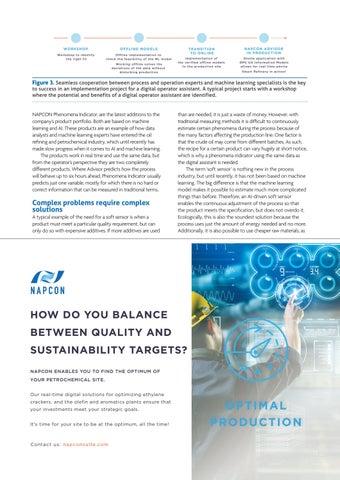Figure 3. Seamless cooperation between process and operation experts and machine learning specialists is the key to success in an implementation project for a digital operator assistant. A typical project starts with a workshop where the potential and benefits of a digital operator assistant are identified. NAPCON Phenomena Indicator, are the latest additions to the company’s product portfolio. Both are based on machine learning and AI. These products are an example of how data analysts and machine learning experts have entered the oil refining and petrochemical industry, which until recently has made slow progress when it comes to AI and machine learning. The products work in real time and use the same data, but from the operator’s perspective they are two completely different products. Where Advisor predicts how the process will behave up to six hours ahead, Phenomena Indicator usually predicts just one variable, mostly for which there is no hard or correct information that can be measured in traditional terms.
Complex problems require complex solutions A typical example of the need for a soft sensor is when a product must meet a particular quality requirement, but can only do so with expensive additives. If more additives are used
than are needed, it is just a waste of money. However, with traditional measuring methods it is difficult to continuously estimate certain phenomena during the process because of the many factors affecting the production line. One factor is that the crude oil may come from different batches. As such, the recipe for a certain product can vary hugely at short notice, which is why a phenomena indicator using the same data as the digital assistant is needed. The term ‘soft sensor’ is nothing new in the process industry, but until recently, it has not been based on machine learning. The big difference is that the machine learning model makes it possible to estimate much more complicated things than before. Therefore, an AI-driven soft sensor enables the continuous adjustment of the process so that the product meets the specification, but does not overdo it. Ecologically, this is also the soundest solution because the process uses just the amount of energy needed and no more. Additionally, it is also possible to use cheaper raw materials, as












